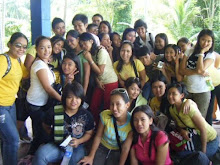

Two Types of Exposure Meter
1. Hand-held meters have a light-sensitive cell, a needle and light-reading scale, and a calculator to convert the reading into f numbers and shutter speeds.
The meter shown below has a selenium cell, which generates its own electricity from light and so does not need a battery. Some hand (and all through-thelens) meters use a smaller, photo-resistant cell, which is more sensitive but needs a battery.
With selenium cell meters under poor lighting, the hinged baffle at the back of the meter should be down to allow the needle to read over one scale.
Under bright light, the baffle should be up, covering the light sensitive cell- the needle then reads over a different, higher scale. When using a hand-held meter be careful not to obstruct the light sensitive cell.
2. Through-the-lens meters measure light from the subject in various ways. Some view the whole picture area, averaging out the light and dark areas, top right. This is fine if your picture has roughly equal amounts of light and dark areas.
A few through the lens meters give "spot" readings, center right- they read small area of the picture, usually a central zone marked on the focusing screen. This enables you to read exposure for just one key area, such as a face, or to take more than one measurement-from the light and dark areas-which can then be avaraged to get an over all reading. A spot reading allows you greatest control and accuracy buut it is also easy to make a mistake, for example, measuring only the sky when your subject is mostly landscape.
Some meters use a "center-weighted" system, which measures most of the picture but gives prominence to the central area, bottom right. This works well provided the central area is representative of the whole scene.
1. Hand-held meters have a light-sensitive cell, a needle and light-reading scale, and a calculator to convert the reading into f numbers and shutter speeds.
The meter shown below has a selenium cell, which generates its own electricity from light and so does not need a battery. Some hand (and all through-thelens) meters use a smaller, photo-resistant cell, which is more sensitive but needs a battery.
With selenium cell meters under poor lighting, the hinged baffle at the back of the meter should be down to allow the needle to read over one scale.
Under bright light, the baffle should be up, covering the light sensitive cell- the needle then reads over a different, higher scale. When using a hand-held meter be careful not to obstruct the light sensitive cell.
2. Through-the-lens meters measure light from the subject in various ways. Some view the whole picture area, averaging out the light and dark areas, top right. This is fine if your picture has roughly equal amounts of light and dark areas.
A few through the lens meters give "spot" readings, center right- they read small area of the picture, usually a central zone marked on the focusing screen. This enables you to read exposure for just one key area, such as a face, or to take more than one measurement-from the light and dark areas-which can then be avaraged to get an over all reading. A spot reading allows you greatest control and accuracy buut it is also easy to make a mistake, for example, measuring only the sky when your subject is mostly landscape.
Some meters use a "center-weighted" system, which measures most of the picture but gives prominence to the central area, bottom right. This works well provided the central area is representative of the whole scene.


No comments:
Post a Comment